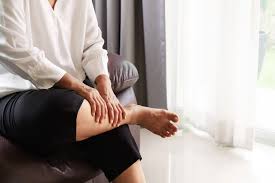Can Varicose Veins Cause Pain Even While Resting?
Varicose veins, those swollen, twisted, and often highly visible veins typically found in the legs, can be more than just a cosmetic concern. For many people, varicose veins lead to discomfort, heaviness, and even pain. While some may associate varicose vein pain with standing or walking, this discomfort can also be experienced during rest. This blog will explore how varicose veins cause pain even when you’re inactive, the reasons behind it, and how to find relief.

What Are Varicose Veins?
Varicose veins occur when veins—typically in the legs—become enlarged and twisted due to poor blood flow. Healthy veins have a series of one-way valves that keep blood moving toward the heart. When these valves weaken or malfunction, blood can flow backward and pool in the vein, causing it to swell and become varicose.
This condition is common in adults and can result from factors like:
Genetics
Aging
Pregnancy
Prolonged standing or sitting
Obesity
Varicose veins can cause symptoms ranging from mild discomfort to significant pain, itching, and throbbing. In some cases, they can even lead to more serious complications, like blood clots or skin ulcers.
Why Do Varicose Veins Hurt Even When You’re Resting?
While many people experience increased varicose vein pain after standing or sitting for extended periods, it’s not unusual for pain to persist even when resting. Here are some of the main reasons why varicose veins can be painful at rest:
Blood Pooling and Increased Pressure
With varicose veins, blood can accumulate in the veins rather than flow smoothly back to the heart. This pooling causes an increase in venous pressure, which can create a dull, aching pain even when you’re not actively moving. This feeling of “pressure” can worsen after a day of standing, but it can continue into the evening or night, making it hard to relax.
Inflammation in the Vein Walls
As blood pools in varicose veins, the walls of these veins can become inflamed. Inflammation often causes discomfort, tenderness, or a sensation of warmth around the affected area, even while sitting or lying down. Chronic inflammation in varicose veins can also make the surrounding tissue more sensitive, resulting in persistent pain that doesn’t subside with rest.
Muscle Cramps and Restless Leg Syndrome
Varicose veins may be associated with muscle cramps and restless leg syndrome (RLS), which can create discomfort during rest, especially at night. The pooling blood and pressure changes in varicose veins can disrupt normal muscle function and create muscle spasms or a crawling sensation, making it difficult to relax or fall asleep.
Nerve Compression
When varicose veins swell, they can press against nearby nerves, causing nerve pain or a tingling sensation. This can create a dull, aching pain that is noticeable at rest and can radiate down the leg or to nearby areas, contributing to discomfort even without physical activity.
Blood Flow Restriction
In some cases, varicose veins can restrict proper blood circulation, which can lead to a lack of oxygen and nutrients reaching the muscles and tissues around the affected area. Poor circulation can create a sensation of tightness, numbness, or heaviness in the legs, which doesn’t necessarily improve with rest. Instead, the discomfort might linger or even intensify when lying down.
Common Symptoms of Varicose Vein Pain at Rest
The discomfort caused by varicose veins during rest can take several forms. Here are some specific symptoms to look out for:
Aching or throbbing pain: This can feel like a constant dull ache that doesn’t subside with rest.
Heaviness in the legs: Often described as a “pulling” sensation, especially after a long day.
Restless legs: The need to constantly move the legs to relieve discomfort, which can be a sign of restless leg syndrome.
Tingling or numbness: Caused by nerve compression, this sensation can feel similar to “pins and needles.”
Cramps or muscle spasms: These can happen more frequently at night and may disrupt sleep.
If you’re experiencing these symptoms consistently, it’s worth consulting a healthcare professional to discuss possible treatments and management strategies.
Tips for Relieving Varicose Vein Pain During Rest
While varicose vein pain at rest can be persistent, there are several steps you can take to alleviate discomfort and promote better circulation. Here are some practical strategies:
- Elevate Your Legs
Lifting your legs above heart level can encourage blood to flow back toward the heart, reducing pressure and relieving pain. Try propping your legs up on a pillow for 15–20 minutes a few times a day or even while lying down to rest. - Use Compression Stockings
Compression stockings help support vein function by applying gentle pressure, which can reduce swelling, relieve pain, and prevent blood from pooling in the veins. Wearing compression stockings during the day can help alleviate pain in the evening and make resting more comfortable. - Engage in Gentle Movement
Although resting may seem beneficial, gentle activities like walking or leg exercises can promote blood circulation, helping reduce the risk of blood pooling and minimizing pain. Avoid prolonged periods of sitting or standing, and try to move every hour. - Apply Cold Compresses
Cold compresses or ice packs can reduce inflammation and numb painful areas, providing temporary relief from varicose vein pain. Avoid hot compresses, as heat can cause veins to dilate and potentially worsen the pain. - Consider Massage or Stretching
Massaging the affected area or gently stretching can improve circulation, relieve muscle tension, and reduce pain. However, avoid massaging directly over varicose veins if they are inflamed, as this could increase discomfort. - Stay Hydrated and Mind Your Diet
Proper hydration and a diet rich in antioxidants, vitamins, and minerals can improve blood flow and reduce inflammation. Foods like leafy greens, berries, and citrus fruits support circulation, while salty foods should be minimized, as they can cause fluid retention and worsen swelling. - Practice Deep Breathing Exercises
Deep breathing exercises help stimulate the diaphragm, which acts as a natural pump for blood return to the heart. Practicing a few minutes of deep breathing can improve circulation and reduce discomfort in the legs.
When to Seek Medical Treatment for Varicose Vein Pain
While lifestyle changes can help alleviate varicose vein pain, some cases may require medical intervention. Consider reaching out to a healthcare provider if:
The pain is severe or persistent, even with home remedies.
You notice new skin changes, such as discoloration or open sores, near varicose veins.
Swelling is significant and doesn’t go down with elevation or compression.
The affected area feels warm or tender to the touch, which could indicate a possible blood clot or infection.
Medical treatments for varicose veins range from minimally invasive options like sclerotherapy and laser treatment to surgical procedures, depending on the severity of the condition. These interventions can help reduce pain, improve circulation, and prevent complications.
Conclusion: Finding Relief from Varicose Vein Pain at Rest
Varicose veins can be painful even when you’re resting, but understanding why this happens can help you take steps to manage the discomfort. By elevating your legs, wearing compression garments, and practicing gentle movement, you can improve circulation and reduce pain caused by blood pooling. In more severe cases, consulting a healthcare professional can lead to effective treatments that target the root of the problem, offering relief and improved quality of life.
Living with varicose veins doesn’t mean you have to accept constant pain. By taking a proactive approach to managing symptoms, you can find ways to rest comfortably and maintain mobility.



